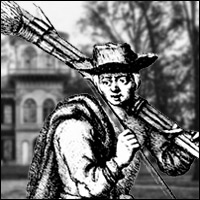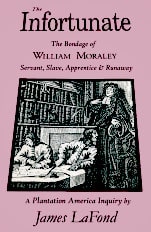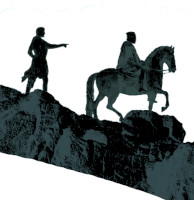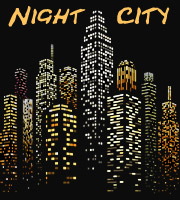The following is derived from ‘The Traveling Howards’ chapter of Mark Finn’s Blood and Thunder: the Life and Art of Robert E. Howard, and from reading the essays by Rusty Burke and Patrice Louinet in the introductions to the Del Rey series of Howard’s Horror, Conan tales and Bran Mak Morn stories, as well as Steve Tompkins’ introduction to Kull.
It has long been well-known by Conan aficionados that Howard came of age in the semi-nomadic household of his physician father, who served as doctor for a number of Texas oil boom towns. Howard himself credited these brawling roughnecks and the confidence men that made their way among them as providing aspects of his famous fictional barbarian adventurer. The view of violence from an after-the-fact story telling perspective, rather than a crime-writing or bio-mechanically based action writing style, fits this influence. A doctor and his family will see violence in a retrospective and atmospheric light.
What many readers and moviegoers do not realize is that Howard was, first and foremost, a writer of atmospheric horror. Seeing the Conan action yarns mistakenly labeled ‘swords and sorcery’ often leads a reader to wonder why pure horror writer H.P. Lovecraft was so interested in Howard’s work. A reading of most Conan stories reveals them to be less violent and more atmospheric than the pulp pace, of which Howard was a master, initially suggests. Also, the common belief that female characters were mere window dressing in these hyper-masculine tales could not be farther from the truth.
Then there is the other element for which mainstream reviewers castigate Howard, for his ‘racism.’ The best any of his advocates do is declare Howard a racist ‘man of his time,’ without even thinking to challenge the politically correct feminist and social justice perspective. Dark Art of an Arуan Mystic is largely an exercise in righting these wrong-headed misconceptions. However, before addressing the stories themselves, from the realistic perspective of Howard the fantasy writer, it will serve the reader well to understand Howard’s predominantly female and nonwhite literary influences.
Howard did have traditional literary influences such as Bullfinch’s Mythology, Edgar Rice Burroughs, Jack London and Lord Byron. However, he saw himself as an oral storyteller in the ancient Celtic tradition, hinted in his correspondence that he was actually engaged in channeling ancestral folk memories, and was, in any case, a product of a recently settled American frontier, rather than an Easterner like Lovecraft, with easy access to voluminous European literature. Howard’s influences were largely oral.
Most intriguing about Howard was that he ignored Mark Twain’s dictum that, although life rarely made sense, fiction had to, otherwise one would lose his readership. When he kept his exposition vague to editorial heresy, it was in the underlying motivations of his female characters, who he permitted to keep their aura of mystery, where the plot-driving male action characters would have their motivations clearly explained.
A few biographical facts, sourced or quoted from Blood & Thunder: the Life and Art of Robert E. Howard, by Mark Finn, should shed some light on the odd genesis of Howard’s imagination.
Howard’s greatest imaginative influence was his long-suffering and seemingly haunted mother, who lived her life trapped by cruel circumstance, and eventually died when Howard was still a young man, triggering his suicide. Like Lovecraft, Howard was a mamma’s boy. But, due to Howard’s different heritage and circumstances, he expressed his awful view of the world from an antagonistic and dynamic perspective, rather than through the pained eyes of the tormented and ineffectual protagonists of Lovecraft’s equally dark visions.
His family migrated up from the piney woods country of the Red River Region of Arkansas, and seemed to have had a history on the Louisiana side of the Mississippi. If one has read Solomon Northup’s Twelve Years a Slave, in which he discusses the rural backwoods nature of Red River plantation life, including the presence of female slave lumberjacks of all colors, down to “white,” one comes away with a sense of isolation and a looming natural world that impinged upon the slaves and slaveholders alike. Howard’s horror fiction—as well as two of his Conan stories—are redolent with this sense of gloomy separation from the civilized world. There were also extreme differences in how whites treated their slaves—and how poor whites viewed them—from the most heinous cruelty, to outright love, affection, and even marriage. Such a complex setting is the bedrock for many of Howard’s more racially charged yarns.
There was Howard’s half-breed Uncle Oscar from Zavala County, who “had enemies of desperate character.” Howard was obsessed throughout his career, with depicting the warriors and religious figures of tribal peoples with passion and depth.
There was also a woman, Arbella Davis, born into slavery, who collected wash in the town of Bagwell with a pompous air and was a storyteller, who was particularly fond of relating the tale of her conversion to Christianity, which spoke more to American Indian mystic tradition than to any European sense of salvation.
“…the spirit of the Lord was strong upon her that she went for ten days and nights without eating or sleeping. She went into a trance, she said, and for days the fiends of hell pursued her through the black mountains and the red mountains. For four days she hung in the cobwebs on the gates of Hell, and the hounds of Hell bayed at her…”
The reader should keep in mind that the American Indian population of the region consisted largely of displaced Seminole and Cherokee who had owned and intermarried with black slaves and fugitives for over a century, and that the maroon spiritual traditions, via which imported slaves tried to maintain a link with ancient African beliefs, were hopelessly comingled with Amerindian spirituality.
Howard—as did Edgar Rice Burroughs in his novel War Chief—seemed to believe in a link between the wild pre-Indo-European peoples of Northern Europe, who haunted the vast primeval forests, and the Native American tribes of the Eastern Woodlands, who inhabited woods so massive and dense as to horrify early European settlers. The theme both explored connected a deep primordial yearning to return to a forested land with the immigration of poor Celtic and pre-Celtic men to the early American frontier. Louis L’Amour, who was a contemporary, and like Howard a boxer, also wrote a series of novels concerning this natural kinship between fragmented European peoples and American Indians of the Eastern Woodlands, most poignantly made in the novel To The Far Blue Mountains.
Howard’s strongest childhood influence was the storytelling cook, and former slave, Aunt Mary Bohannon, who was a nearly white Octoroon, so interbred that she was one 16th from being legally white. Aunt Mary had suffered terribly at the hands of an evil mistress, jealous of her beauty, tortures which are echoed by some pretty savage girl-on-girl torture in his novelette Xuthal of the Dusk. In the letter speaking of Aunt Mary, Howard wrote, “I thank God the slaves on my ancestors’ plantations were not so misused… Aunt Mary told how one day, when the black people were in the fields, a hot wind swept over them and they knew that ‘Ol’ Miss Bohannon’ was dead. Returning to the manor house they found that it was so and the slaves danced and shouted with joy. Aunt Mary said that when a good spirit passes a breath of cool air follows; but when an evil spirit goes by a blast from the open doors of Hell follows it.”
Howard’s fascination with mixed race social hierarchies, of telling stories, at least in part, from the perspective of a put upon and misused woman or slave girl, of cruel seductresses violently jealous of other women, of peoples and nations being swept away like so much dust before pitiless Time, of white men who learn the ways of primitive races to survive in the wilderness, and of a darkly intrusive metaphysical undercurrent to a life that is already quite brutal and violent enough without such additional horror, seems to have stemmed largely from his time spent in childhood, at the knee of an ailing mother, a contentious half-breed uncle, and two former slave girls who had become leading storytellers in the black American tradition.
It, therefore, should not surprise the reader of the following that the fiction of Robert E. Howard—while racist by postmodern standards, for suggesting that people of differing races might have differing characteristics and might have a tendency to certain behaviors—is not, in anyway an expression of racial hatred or condescension. Howard's horror is an inspirational exercise in examining the plight of men and women who have not been blessed by birth into a noble lineage or to a privileged class. What Robert E. Howard—scandalously for his time—gave to his readership, was a sorrow-filled rainbow in the dark, that described the dust-to-dust trajectory of low born people throughout time and across the world, along with the searing message that the only way off the bottom of the human pile is to claw one’s way to the top, and hopefully strangle the bastard sitting on the throne.
A Well of Heroes











